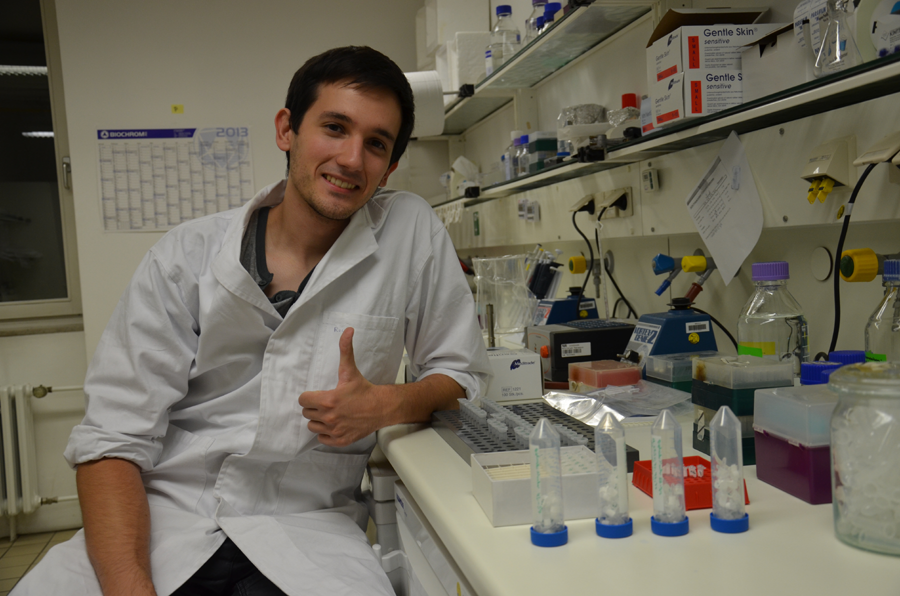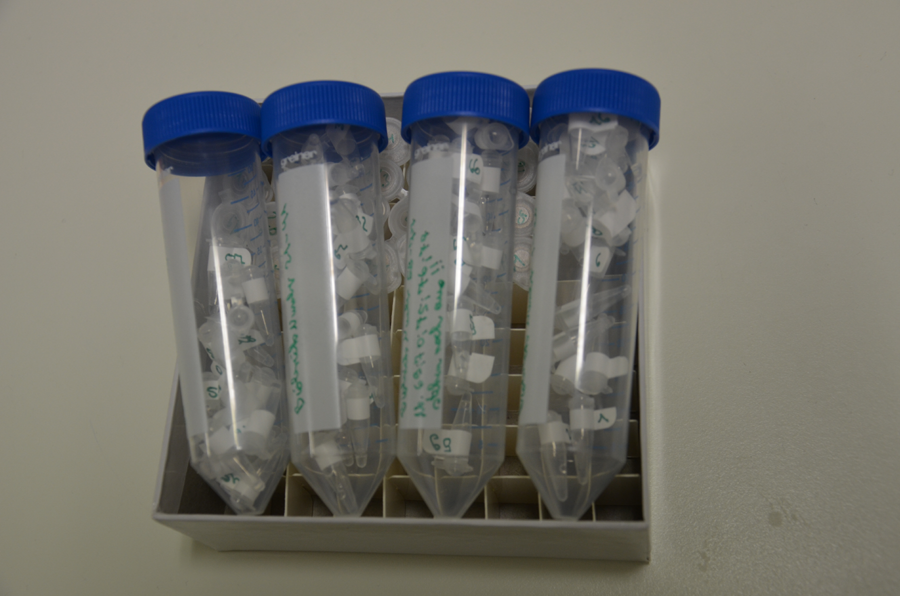Team:TU-Munich/Results/BioBricks
From 2013.igem.org
(→Conversion to RFC[25]) |
(→Correcting the incorrect sequence of a working BioBrick) |
||
| Line 20: | Line 20: | ||
===Correcting the incorrect sequence of a working BioBrick=== | ===Correcting the incorrect sequence of a working BioBrick=== | ||
| - | When we designed our synthetic receptor for ''Physcomitrella patens'' we planed to fuse a fluorescent protein to the cytoplasmatic domain of this receptor in order to be able to localize it by fluorescence microscopy. For this purpose we needed a fluorescent protein in RFC[25] which can be used to create the desired protein fusion. This BioBricks we obtained from the LMU iGEM Team 2012 who had created this BioBrick. After fetching it and a initial sequecing we realised that there was a false sequence in the Parts Registry and that it is not GFPmut3 but GFPmut1 which they provided us with. We finally used this fluorescent protein for our project and put the correct seqeuence into the Parts Registry (see | + | When we designed our synthetic receptor for ''Physcomitrella patens'' we planed to fuse a fluorescent protein to the cytoplasmatic domain of this receptor in order to be able to localize it by fluorescence microscopy. For this purpose we needed a fluorescent protein in RFC[25] which can be used to create the desired protein fusion. This BioBricks we obtained from the LMU iGEM Team 2012 who had created this BioBrick. After fetching it and a initial sequecing we realised that there was a false sequence in the Parts Registry and that it is not GFPmut3 but GFPmut1 which they provided us with. We finally used this fluorescent protein for our project and put the correct seqeuence into the Parts Registry (see [[http://parts.igem.org/Part:BBa_K1159311 BBa_K1159311]]). |
==Impressions from the packaging of our BioBricks== | ==Impressions from the packaging of our BioBricks== | ||
Revision as of 20:53, 3 October 2013
Sendbox
<groupparts>iGEM2013 TU-Munich</groupparts>
BioBricks we improved
Conversion to RFC[25]
Some BioBricks which were already present in the parts registry were converted from RFC[10] to RFC[25] by PCR. The purpose of this improvement was that we introduced with our project the possiblility to dictate the cellular localisation of proteins (cytosolic, secreted and receptor bound). For this purpose the open reading frame of the protein has to be fused to a N-terminal signal peptide (for secretion) or has to be inserted into the extracellular domain of a synthetic receptor. We converted the following BioBricks to RFC[25]:
- Laccase <partinfo>BBa_K863000</partinfo> was improved to the BioBrick <partinfo>BBa_K1159002</partinfo>
- Protein phosphatase 1 is a BioBrick BBa_K1012001 created by 2013 Dundee iGEM team. We have also thought to target microcystin as an important environmental toxin. We liked the idea of using the protein affected in the natural toxicity mechanism to solve the problem. Therefore we contacted Dundee team, they sent us their BioBrick which we converted to RFC[25]. This was necessary as we wanted to localise it extracellularely in a receptor of our moss.
Adding improved versions of the protein
The fluoresceine binding Anticalin FluA was already present in the Parts Registry in RFC[25]. As this BioBrick is from 2008 we used a higher engineered variant with three additional mutations which make it 75-times more affine to fluorescein (KD from 152 nM to 2 nM). This seemed an imporatant point as this Anticalin was twice present in the finals of iGEM (Freiburg Team 2008 and 2009) and an improved variant may be helpful for further iGEM teams as well as for our purpose to use it as a binding protein on trangenic moss. The outdated FluA with a lower affinity was <partinfo>BBa_K157004</partinfo> and the newer version is now available as <partinfo>BBa_K1159003</partinfo>.
Correcting the incorrect sequence of a working BioBrick
When we designed our synthetic receptor for Physcomitrella patens we planed to fuse a fluorescent protein to the cytoplasmatic domain of this receptor in order to be able to localize it by fluorescence microscopy. For this purpose we needed a fluorescent protein in RFC[25] which can be used to create the desired protein fusion. This BioBricks we obtained from the LMU iGEM Team 2012 who had created this BioBrick. After fetching it and a initial sequecing we realised that there was a false sequence in the Parts Registry and that it is not GFPmut3 but GFPmut1 which they provided us with. We finally used this fluorescent protein for our project and put the correct seqeuence into the Parts Registry (see [BBa_K1159311]).
Impressions from the packaging of our BioBricks
 "
"





AutoAnnotator:
Follow us:
Address:
iGEM Team TU-Munich
Emil-Erlenmeyer-Forum 5
85354 Freising, Germany
Email: igem@wzw.tum.de
Phone: +49 8161 71-4351